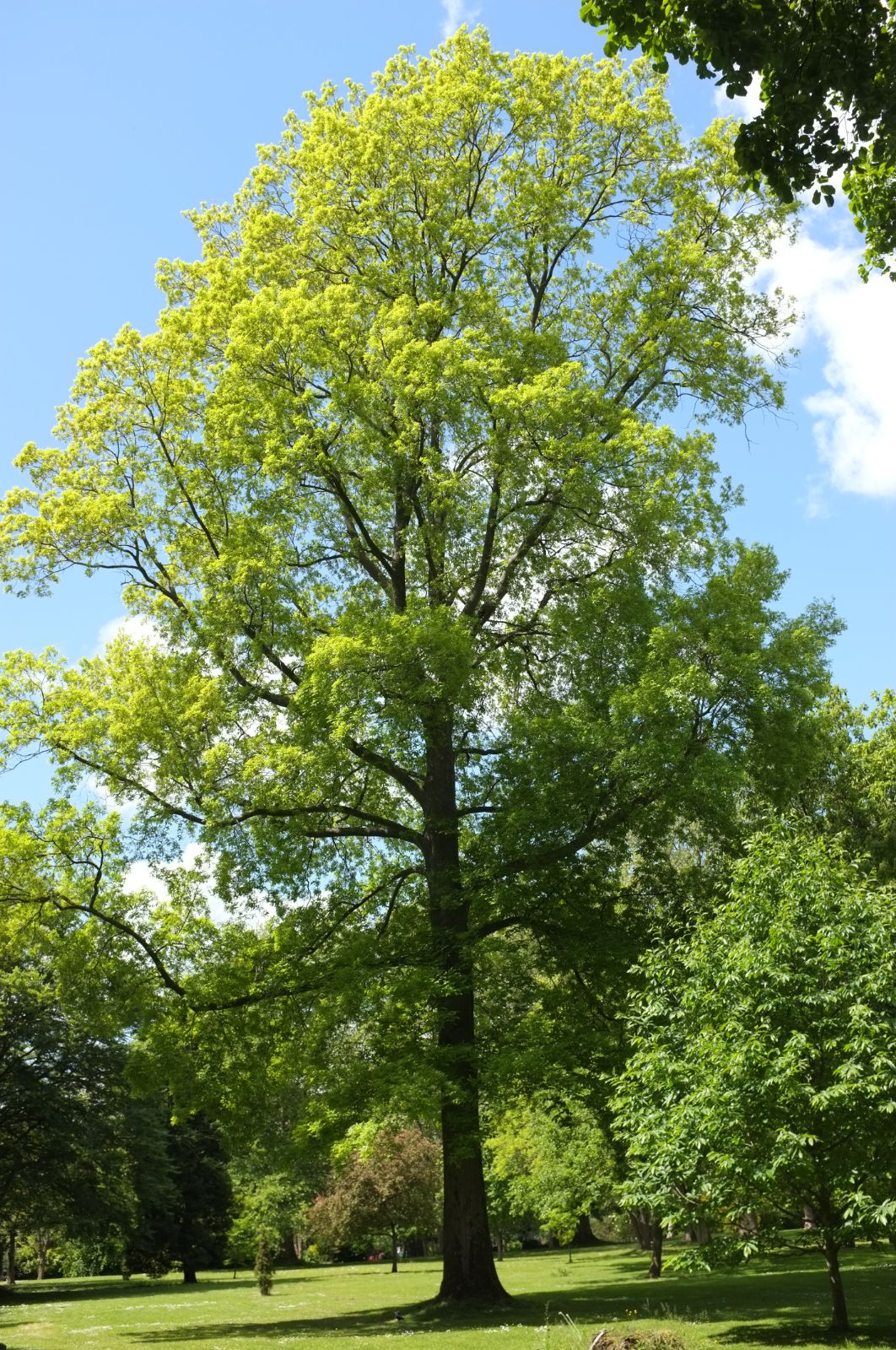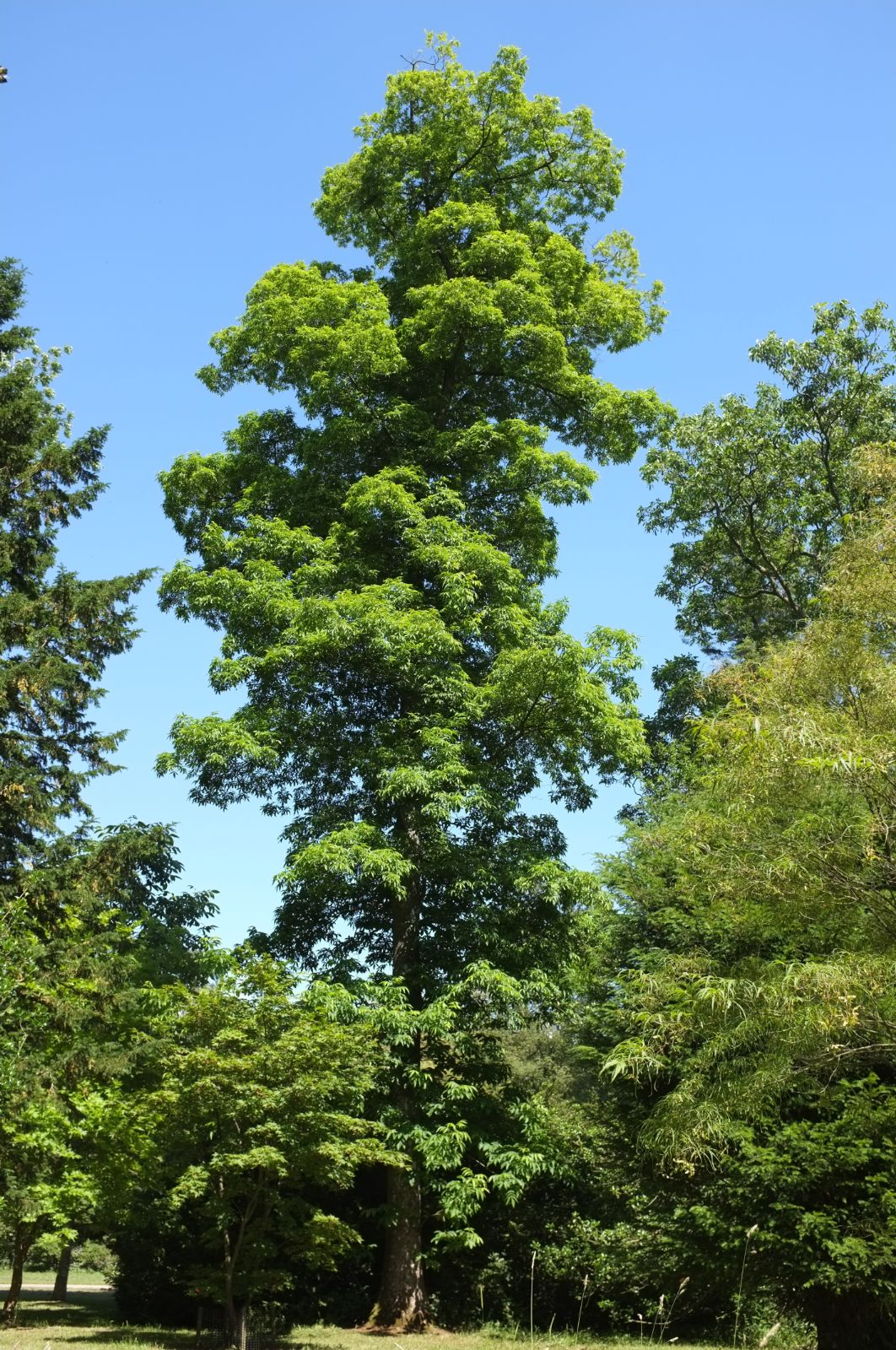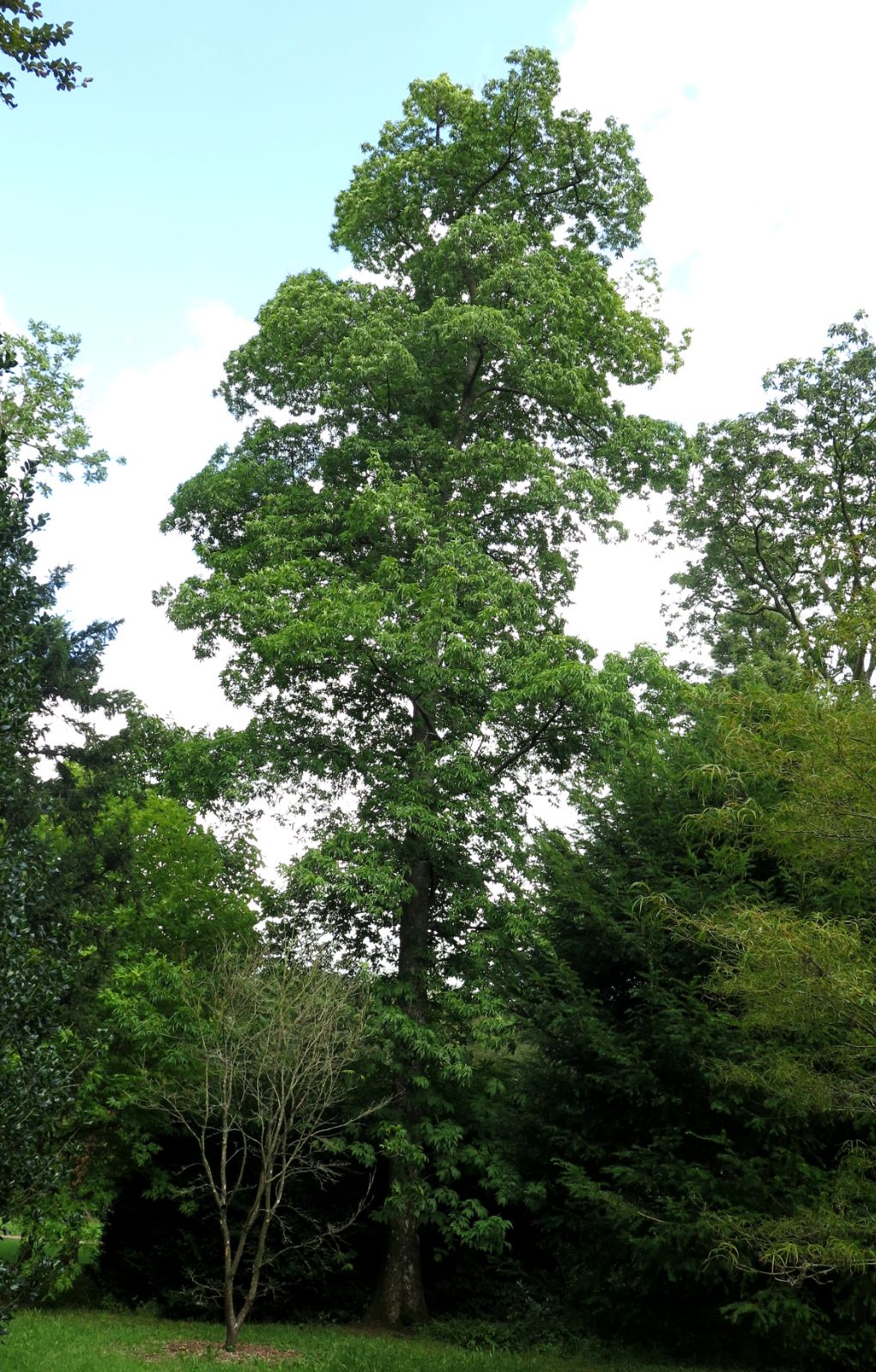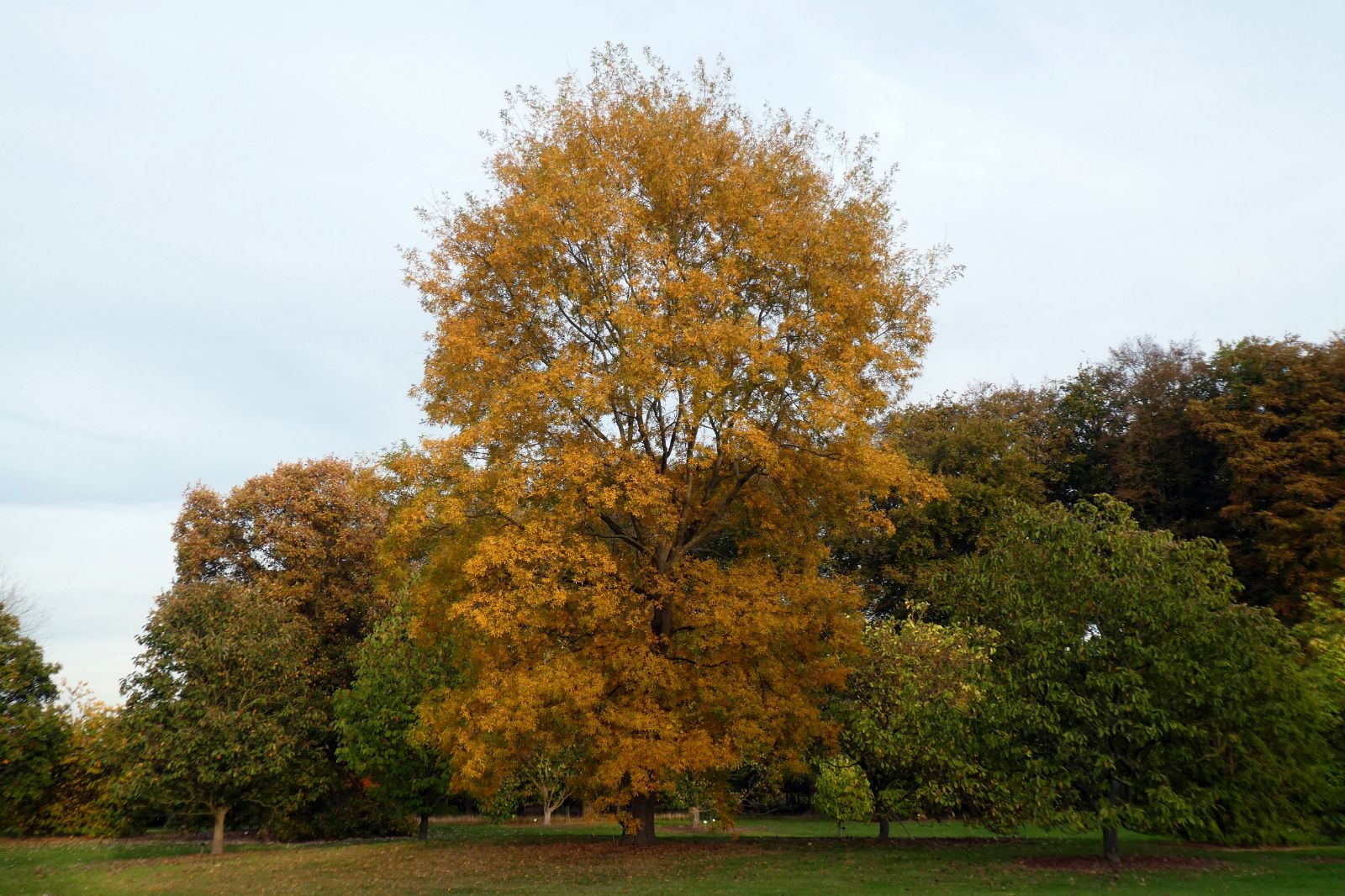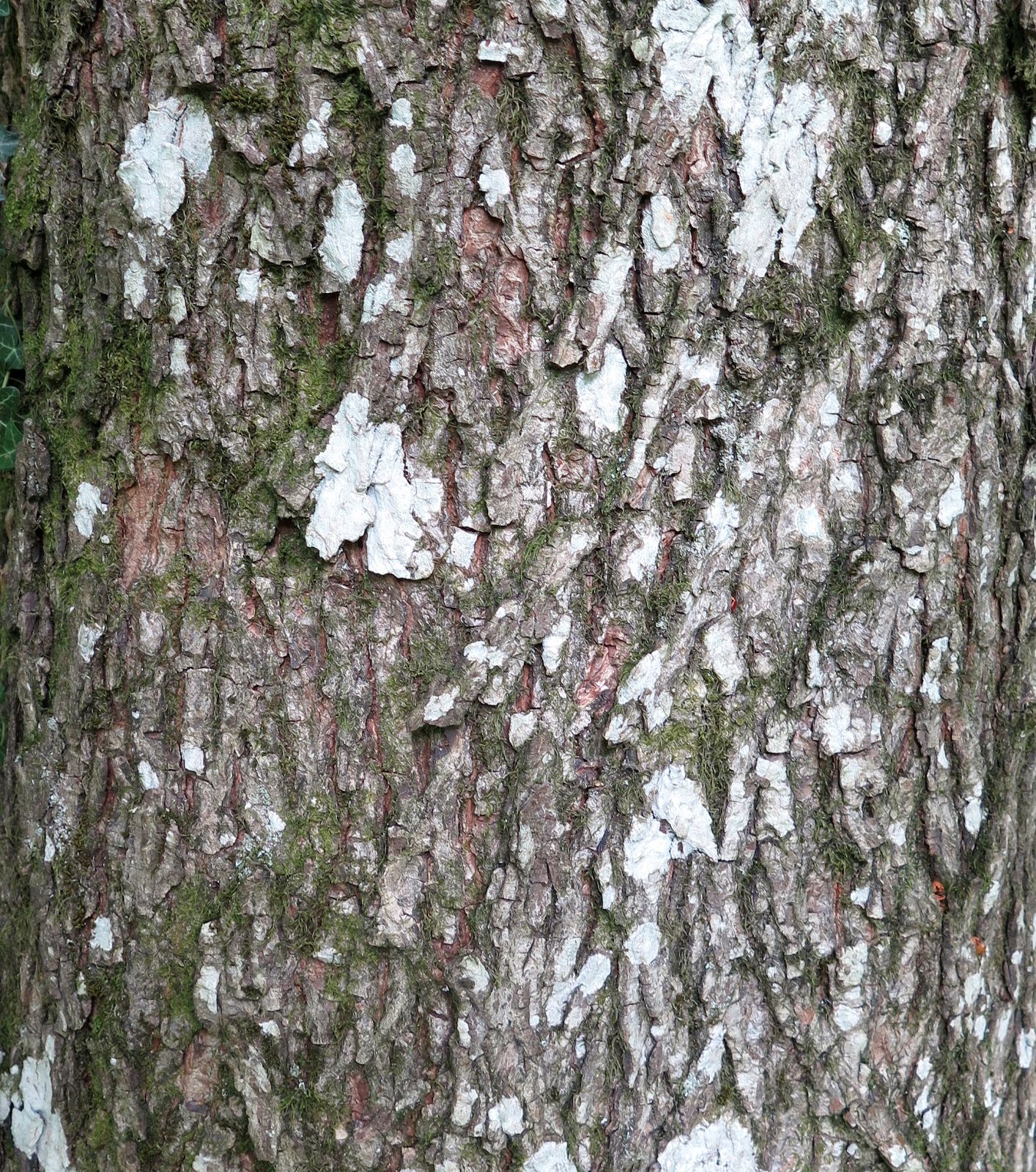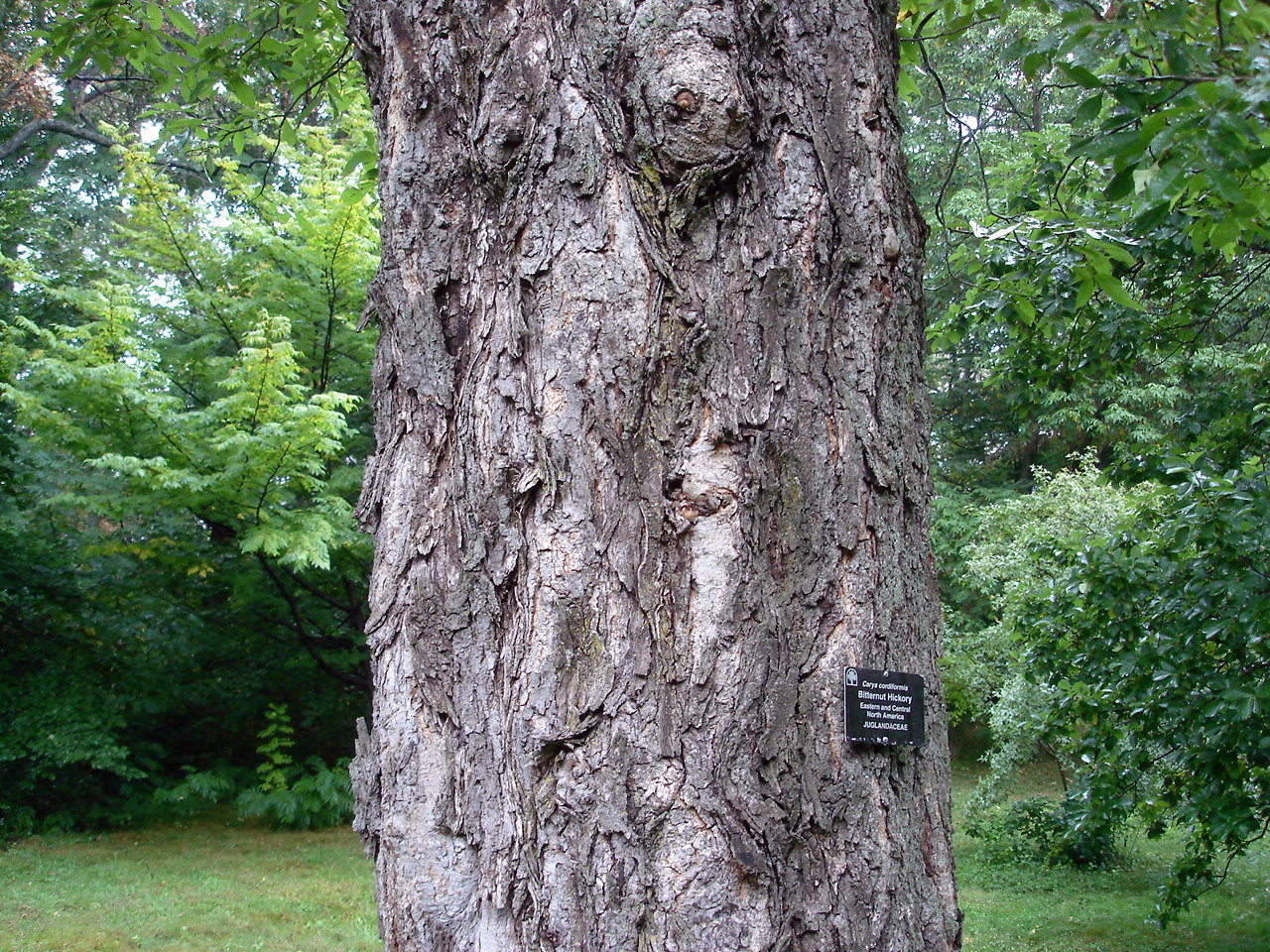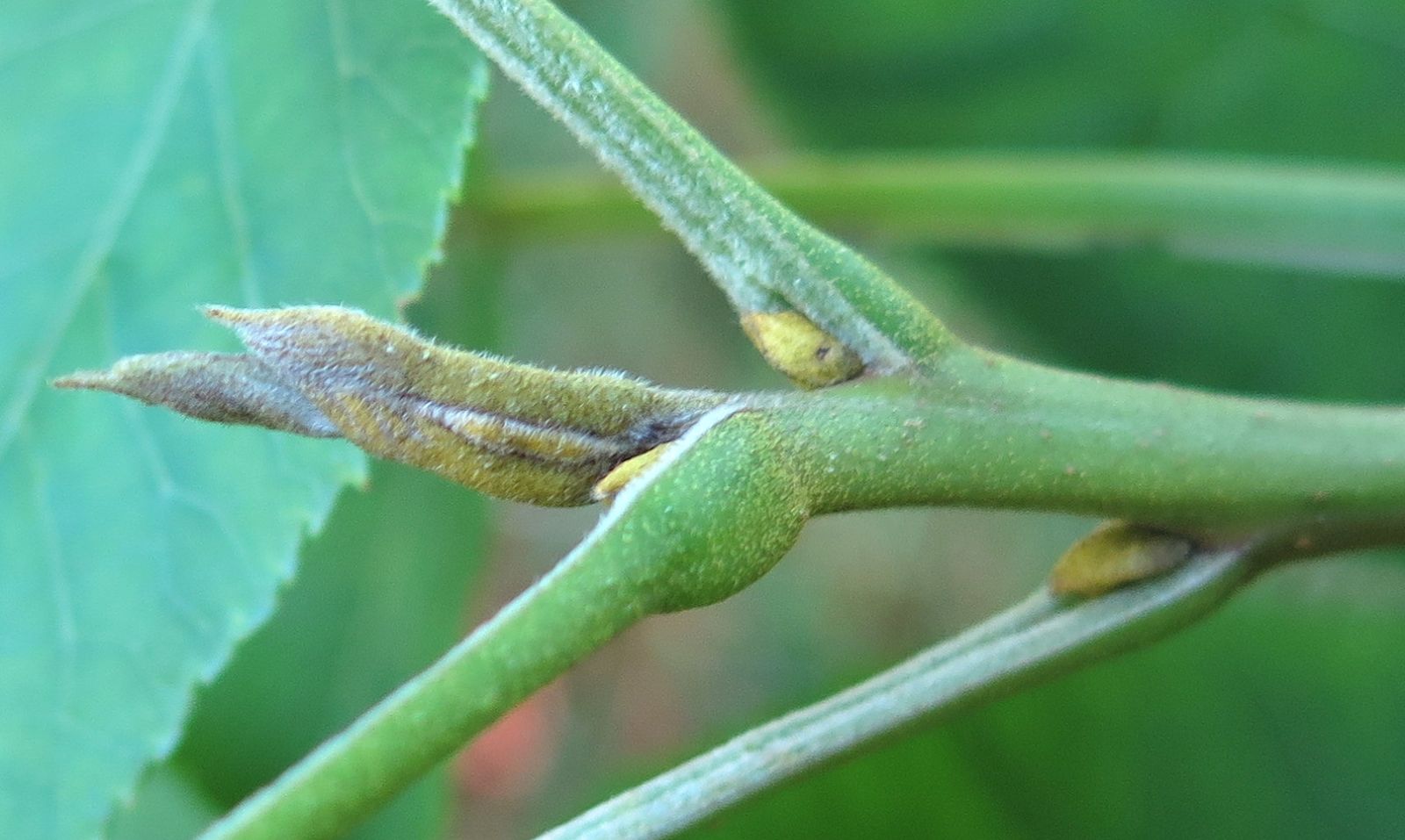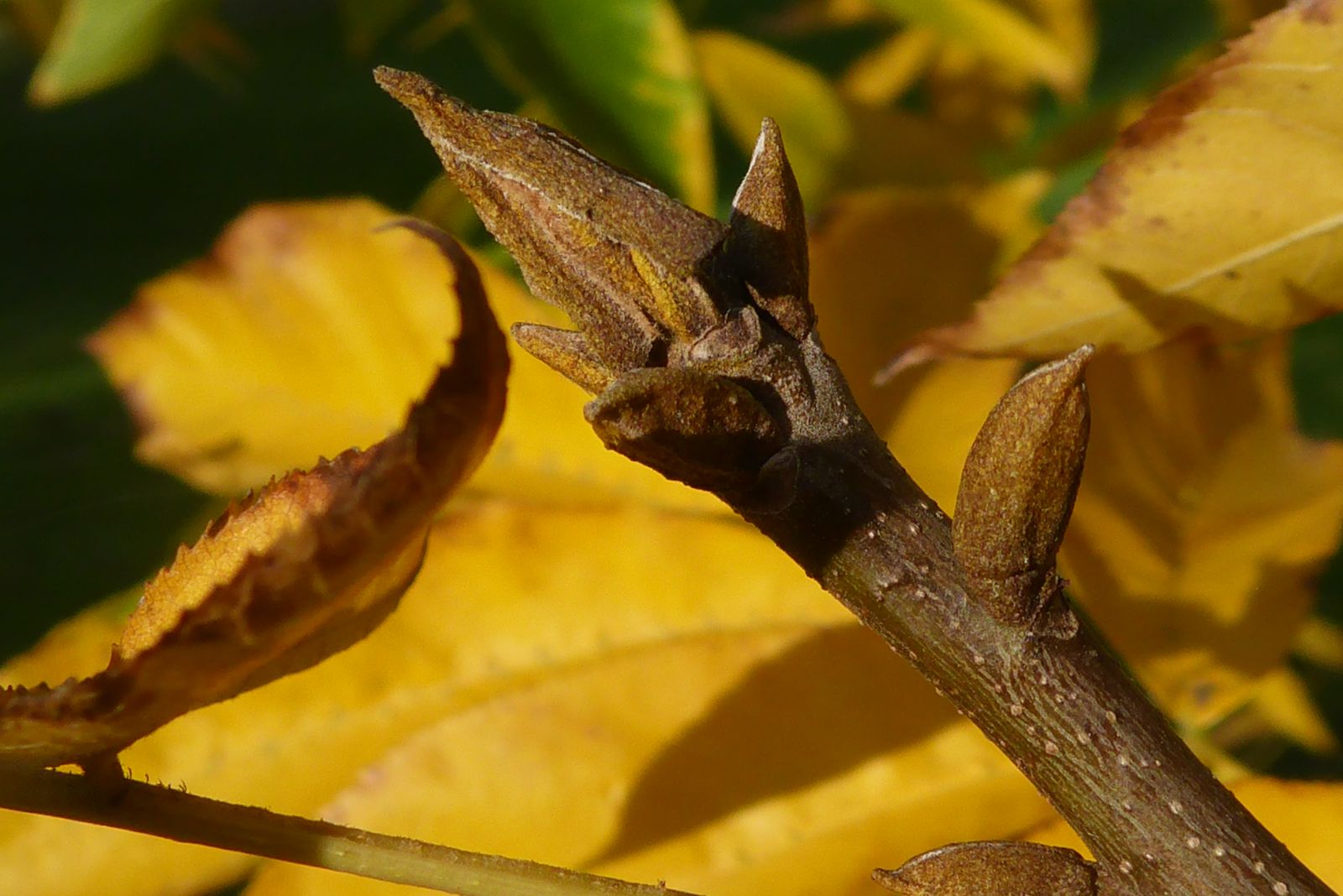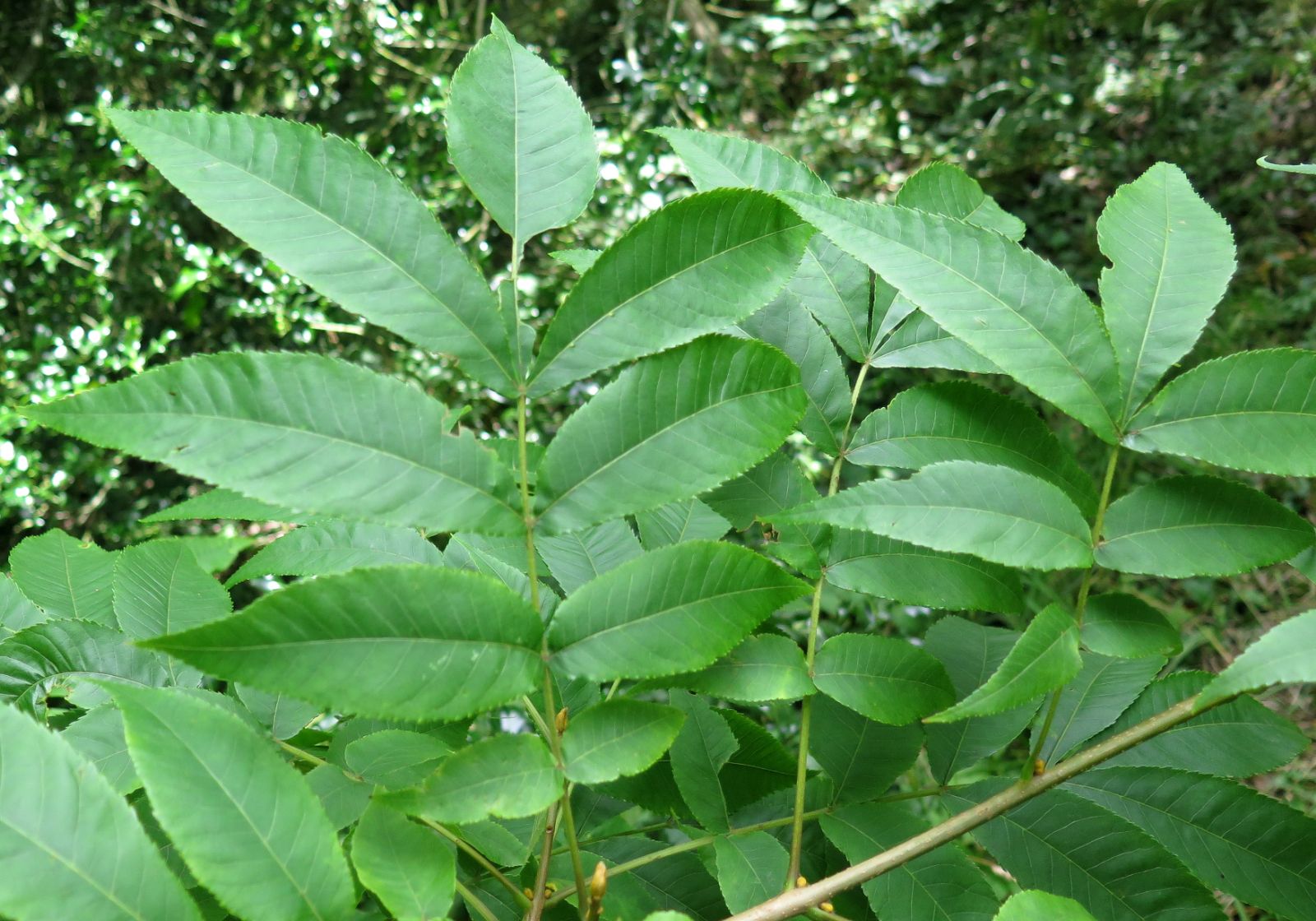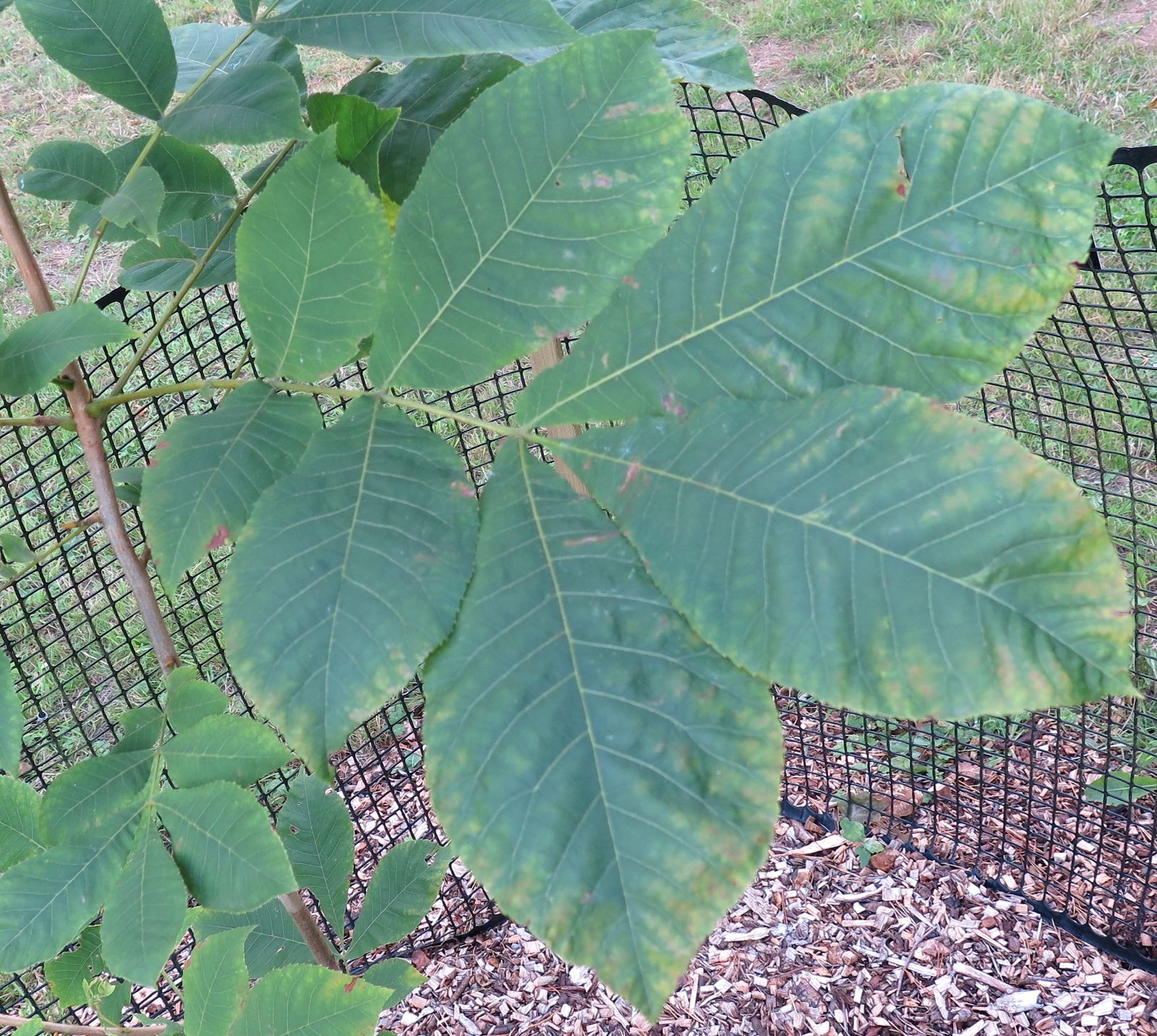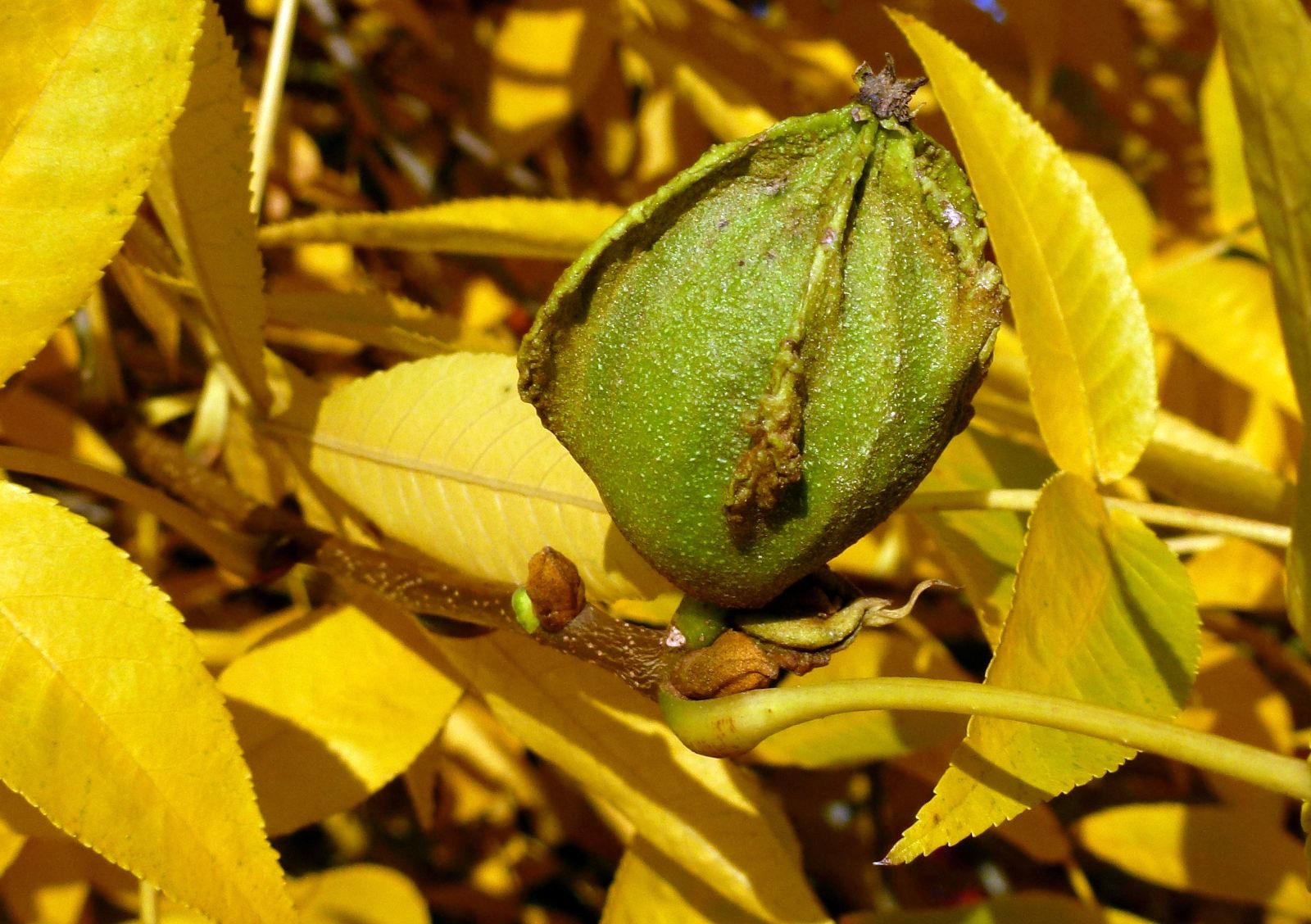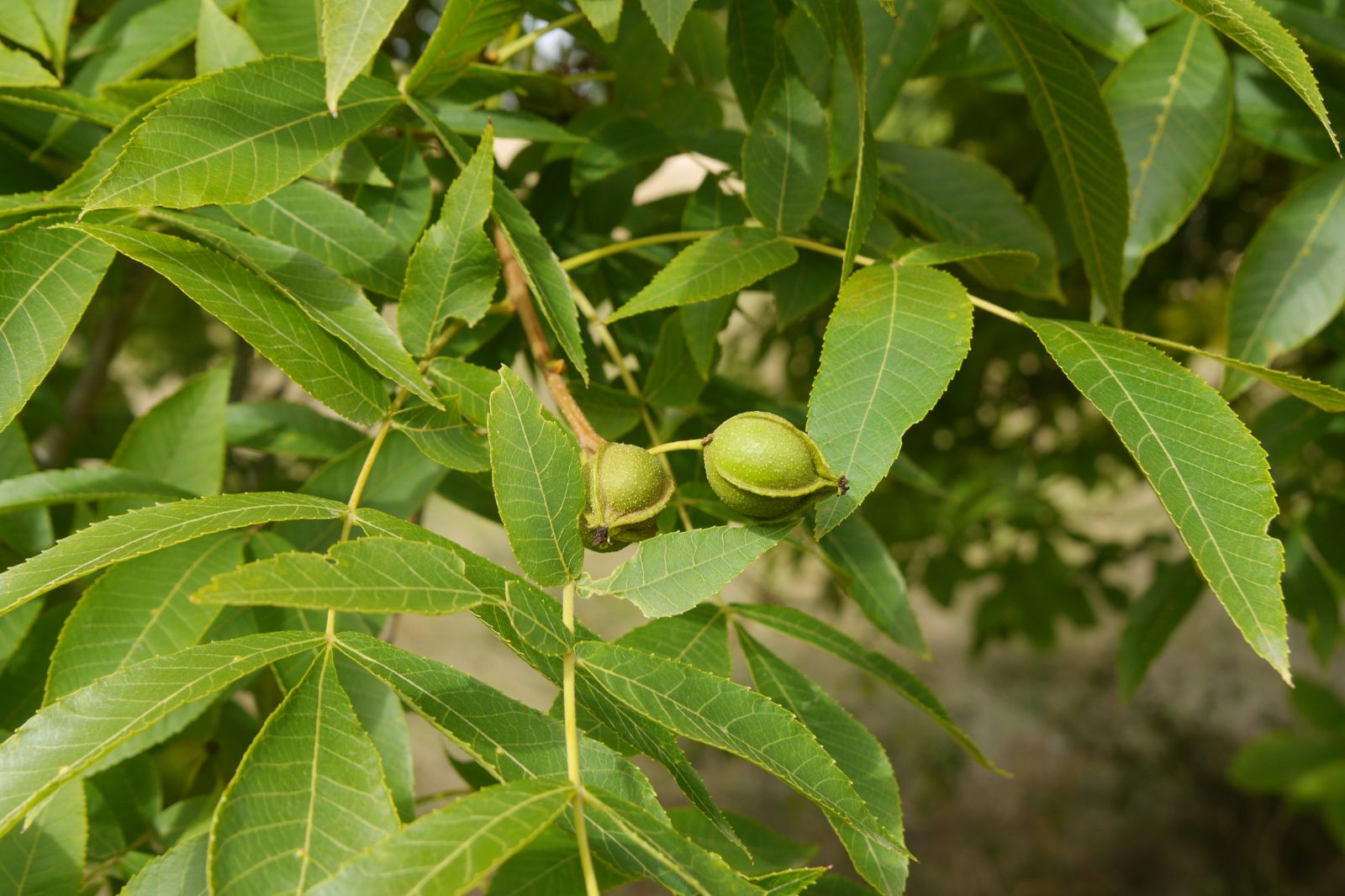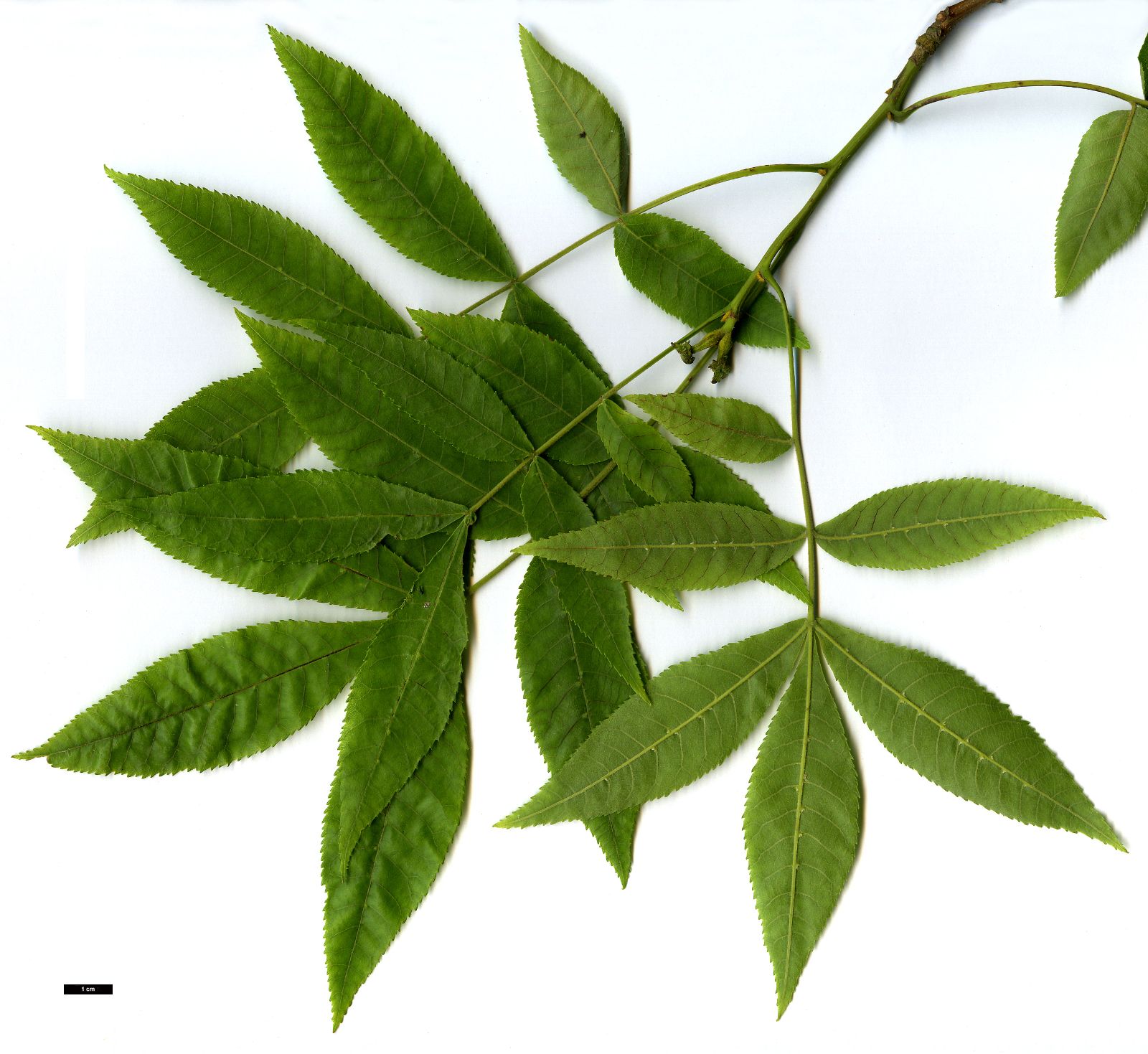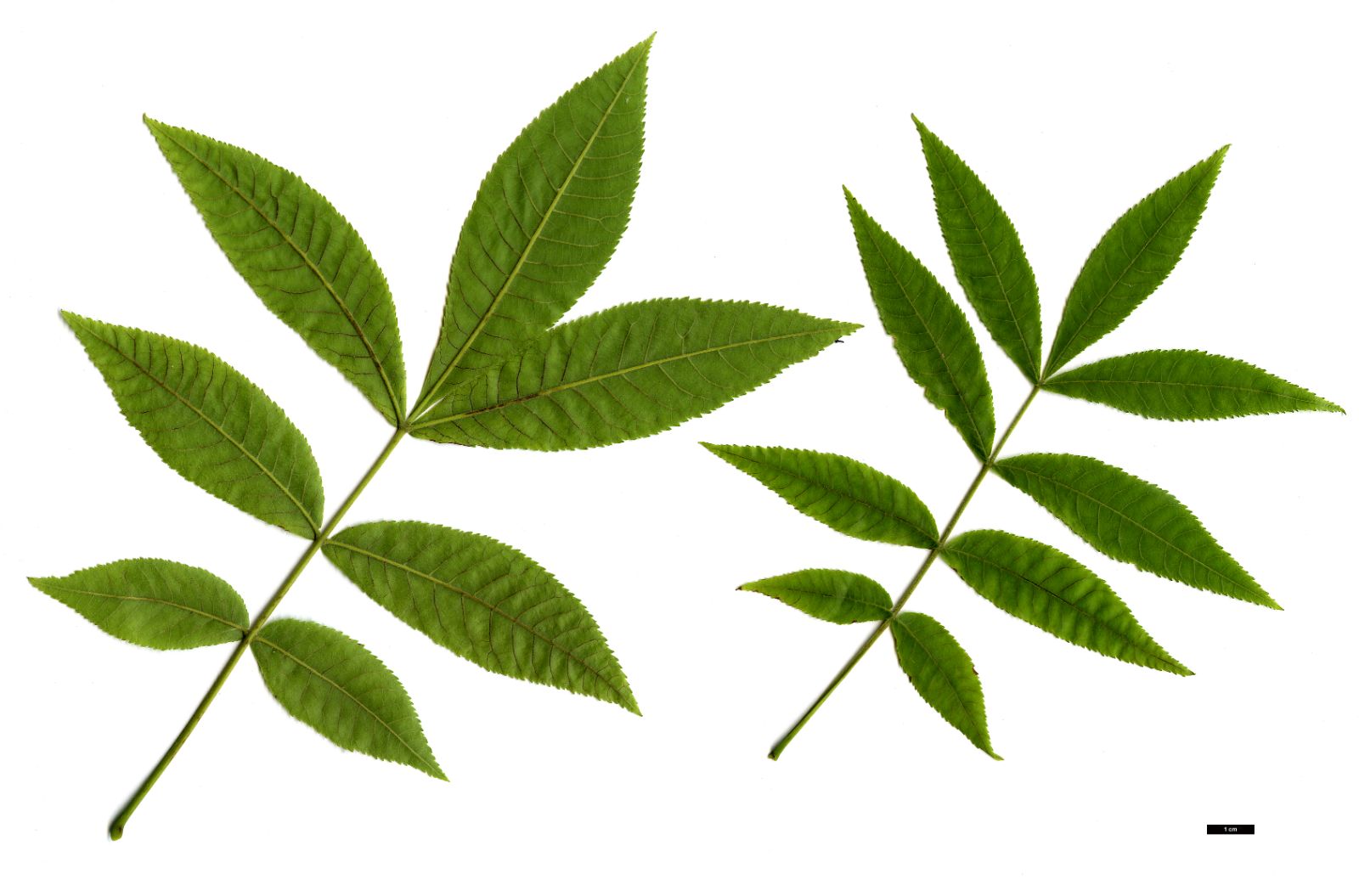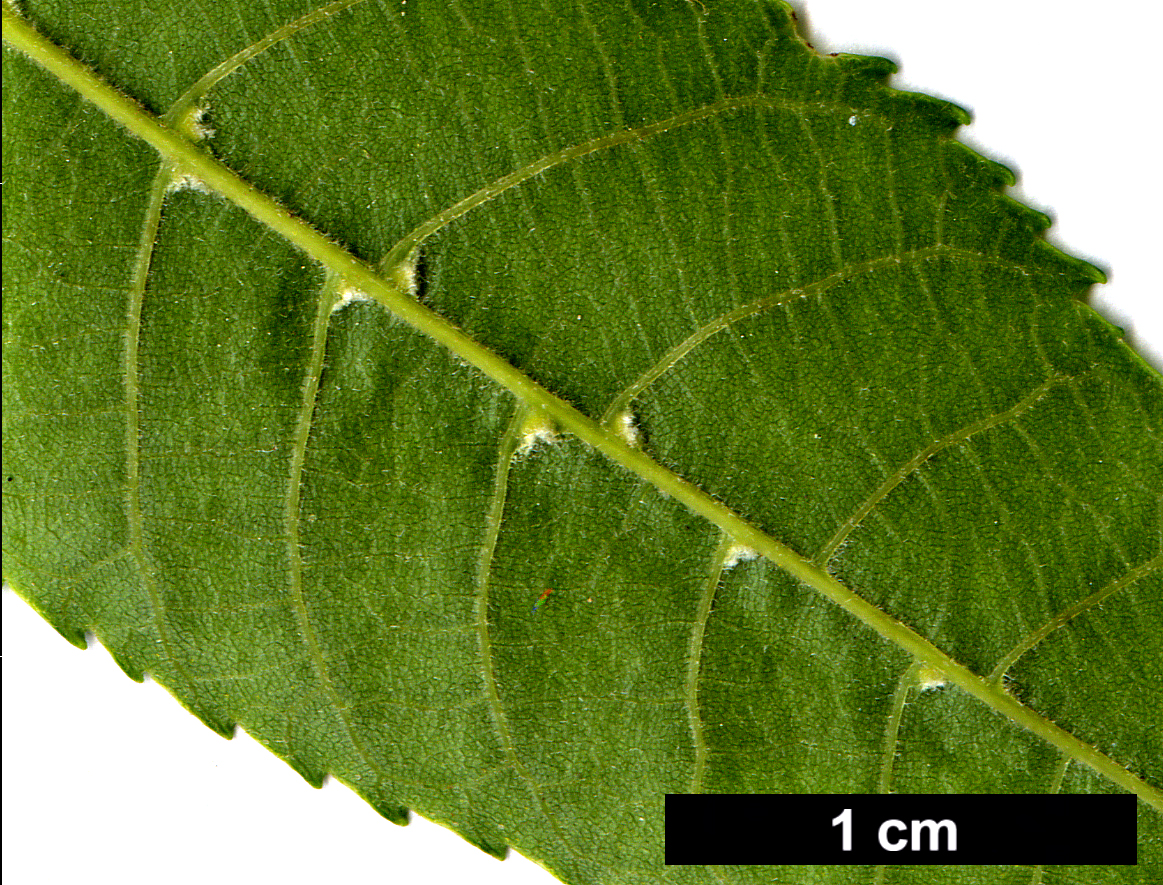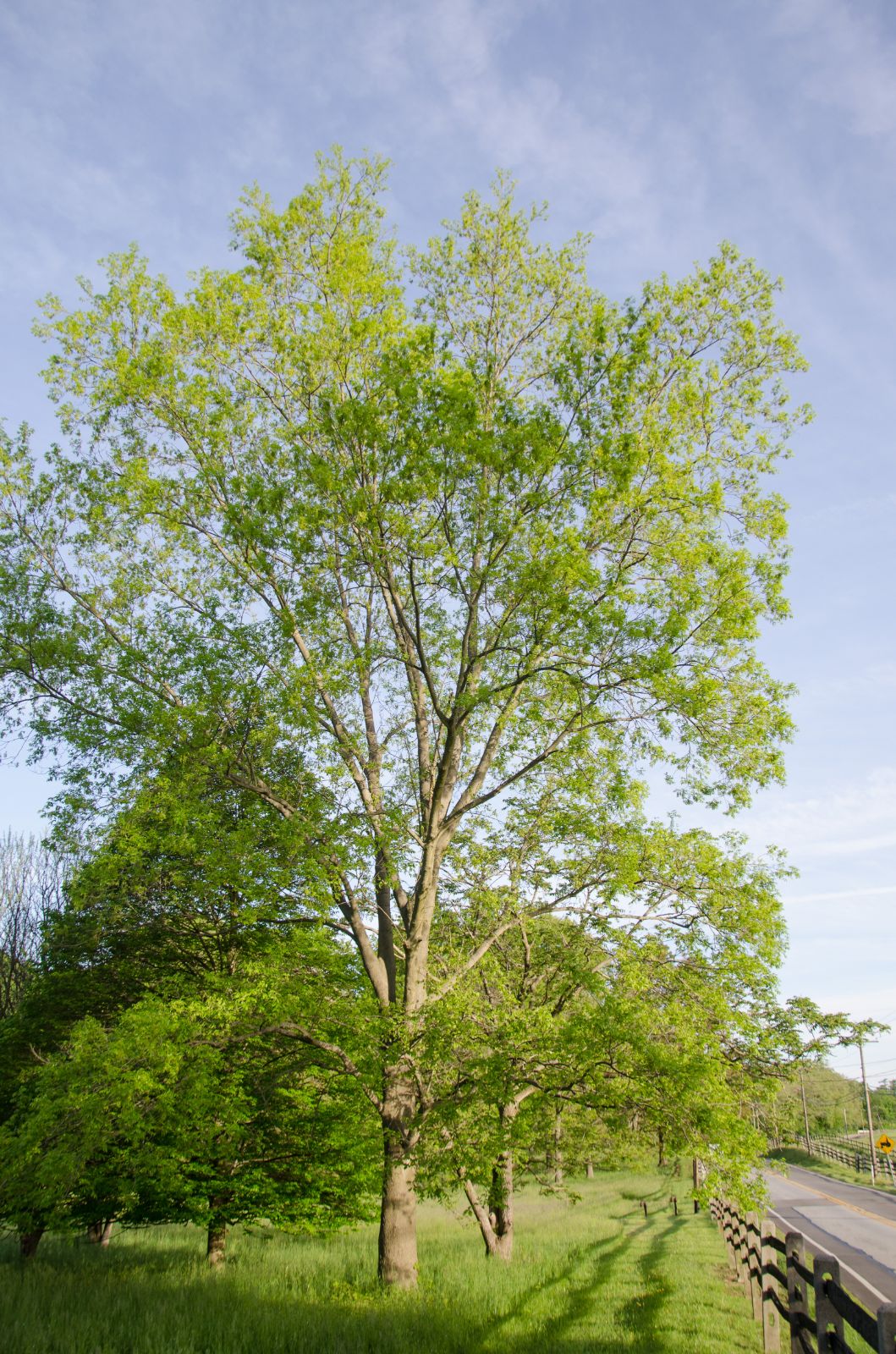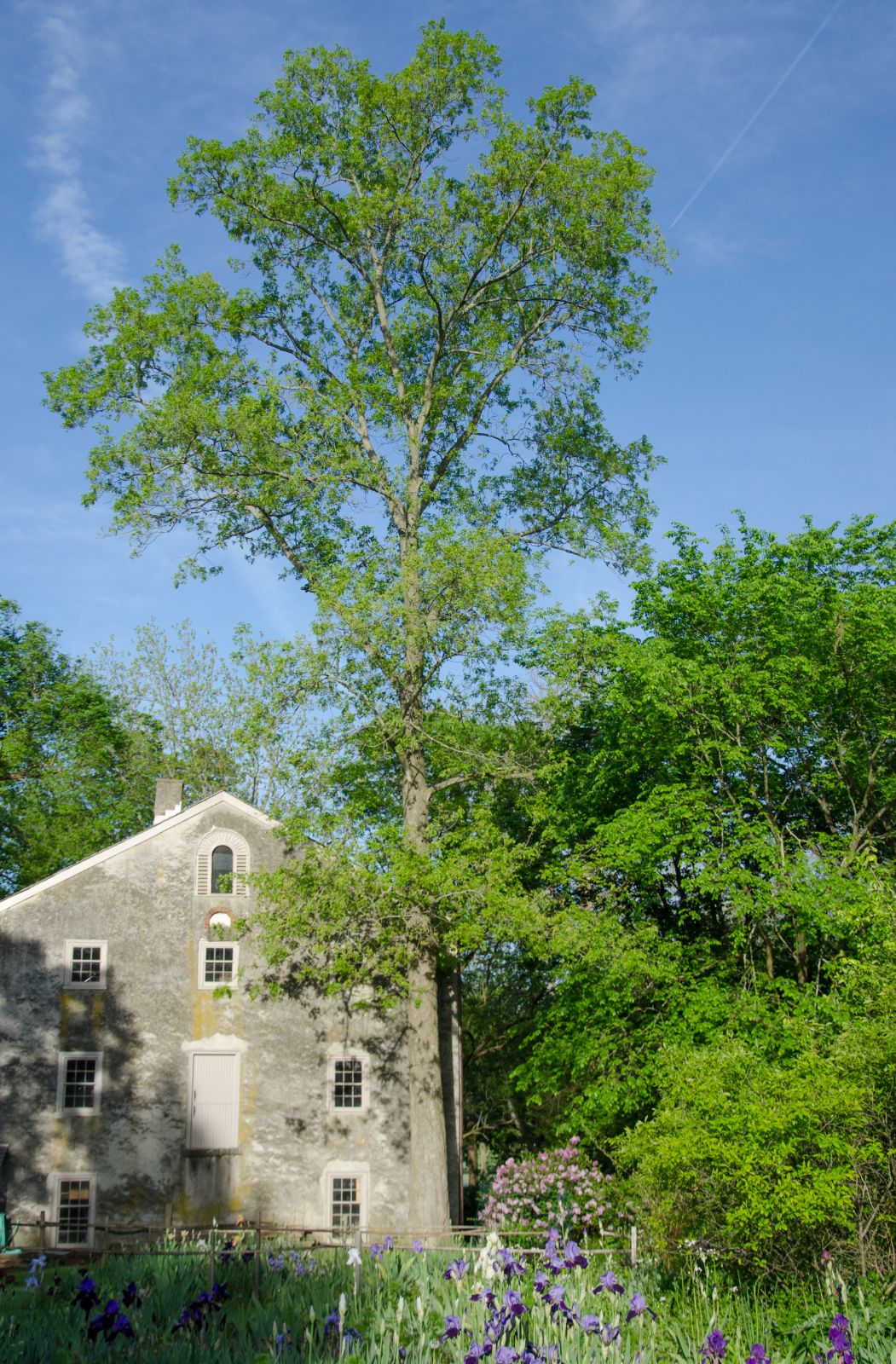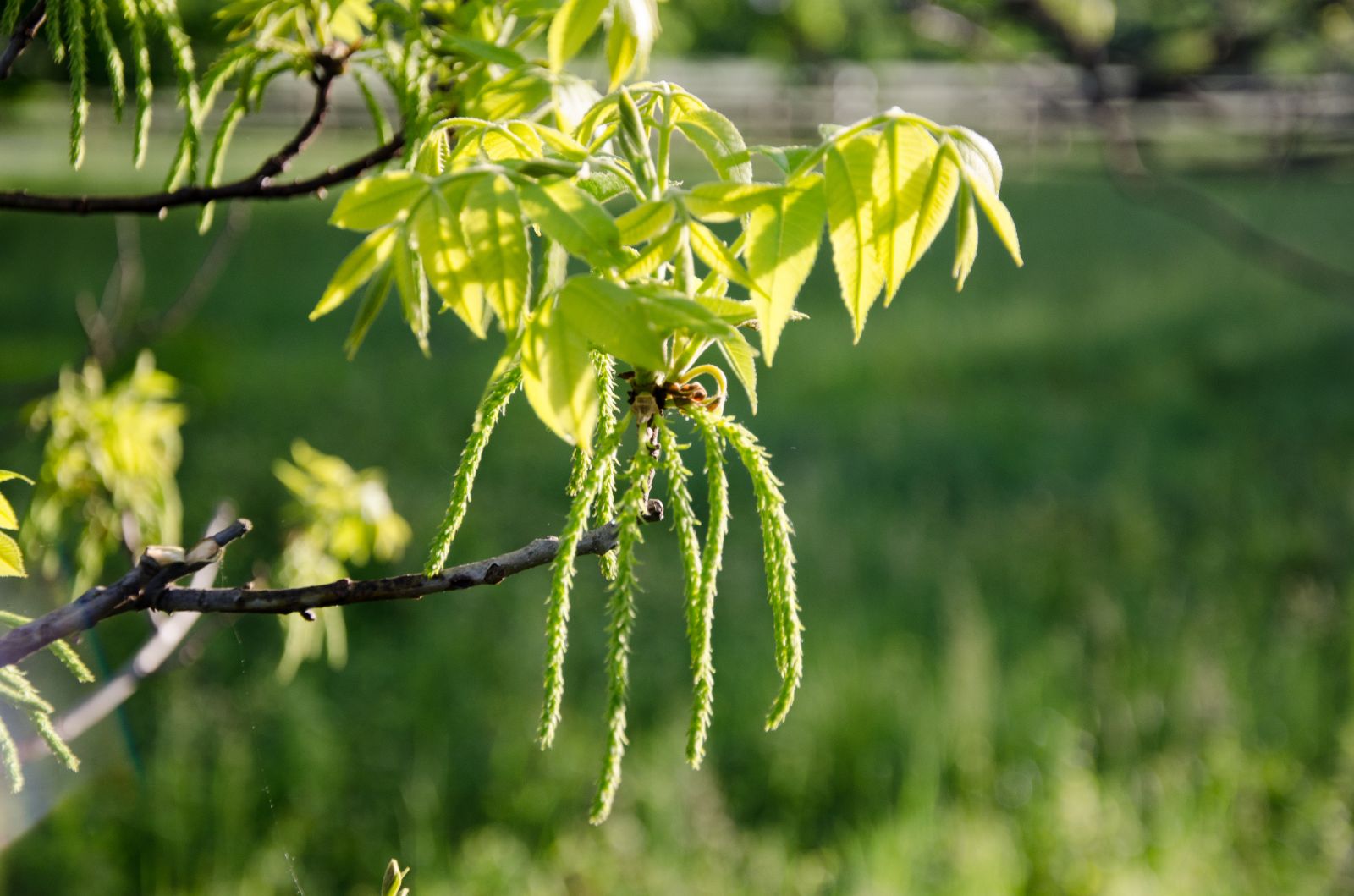Carya cordiformis
Sponsor
Kindly sponsored by
a member of the International Dendrology Society
Credits
Julian Sutton & Dan Crowley (2020)
Recommended citation
Sutton, J. & Crowley, D. (2020), 'Carya cordiformis' from the website Trees and Shrubs Online (treesandshrubsonline.
Genus
Common Names
- Bitternut Hickory
- Swamp Hickory
Synonyms
- Juglans cordiformis Wangenh.
- Carya amara Nutt.
Large tree to 52 m in the wild. Bark grey to brownish, smooth or ridged or exfoliating in small plate-like scales. Branchlets tan, slender, glabrous, scaly towards tip, often tending to droop from the ascending branches. Terminal bud oblong, 1–1.9 cm long, sulfur-yellow to tan, with yellow peltate scales, pilose near apex; bud scales valvate; axillary buds protected by a pair of valvate bracteoles. Leaves deciduous, imparipinnate, 15–38 cm long; leaflets (5–)7–9(–13), ovate or obovate to lanceolate or oblanceolate, sometimes weakly arched, 3–19 × 1–7 cm, upper surface largely glabrous, with scattered scales when young; lower surface villous with simple, 2–4-armed hairs along the midrib and primary veins, densely to sparsely pubescent throughout, and with abundant large peltate scales and small round and 2– or 4-lobed peltate scales at first, persisting near margins at the base and apex later on; margins finely to coarsely serrate, apex acuminate; lateral petiolules 0–0.2 cm long; terminal petiolules 0.2–0.8 cm long, petiole hirsute near rachis, 3–7 cm long. Male spikes to 16 cm long, glabrous or hirsute, scaly. Fruits brown, 2–3 × 2–3.2 cm, obovoid or nearly globose, splitting to the middle or below the middle, sutures winged; nuts finely wrinkled. (Bean 1976; Stone & Whittemore 1997; Whittemore 2013).
Distribution Canada Extreme south of Ontario and Quebec. United States From the eastern Great Plains to the Atlantic, absent from the far southeast.
Habitat Flood plains, better-drained hillsides and limestone glades, 0–900 m.
USDA Hardiness Zone 4-9
RHS Hardiness Rating H6
Conservation status Least concern (LC)
A pecan hickory, Bitternut is perhaps the most abundant and uniformly distributed of wild American Carya species, and is also one of the most familiar and easily recognised in European cultivation. It is commonest from southern New England east to Iowa, and from southern Michigan south to Kentucky (Smith 1990). The species has a broad ecological range, growing in floodplains and valleys at low elevations but ascending almost to the boreal zone in the Appalachians (Lance 2004). Present in many forest types, it rarely dominates.
This is often regarded as the easiest hickory to identify. The buds are yellow, often a striking sulphur-yellow but sometimes merely yellowish; terminal buds are of the pecan type, elongated, with leaf-like bud scales, which give the impression of nakedness. In cultivation, the yellow, truly naked buds of C. cathayensis are the only ones which could easily be confused, but that is still a very rare tree. The relatively small, rather thin shelled fruits are distinctive. The winged suture is characteristic, although in the context of other Juglandaceae such as Pterocarya and Cyclocarya, it appears little more than a flange. The more or less heart shaped nut gives rise to the specific epithet cordiformis. The often smooth, ‘tight’ bark can also help distinguish Bitternut from several other common hickories (Grauke 2003). Under forest conditions the trunk is typically long, straight and branch-free, with a short crown of ascending branches. Of all the northern Carya species it is the most prolific producer of root suckers and coppice shoots from the root crown of felled trees (Coladonato 1992).
While there are scattered reports of wildlife feeding on the bitter nuts (Smith 1990), this does not seem to be the norm; gravity may well be the major means of seed dispersal (Coladonato 1992). The common name is clearly descriptive and even squirrels are said to ignore the fruits (Dirr 2009). Despite this, there are a couple of named 20th-century cultivars, ‘Hatch’ and the thin-shelled ‘Halesite’ (Grauke 2003). Sternberg (2004) encountered an exception while attempting to trick a family member into eating the ‘bitter’ nuts, though these are evidently few and far between.
The wood is a candidate for the best meat-smoking hickory (Kurz 2003), but like that of other pecan hickories is less durable than true hickory woods (Smith 1990). Indigenous peoples made wide use of this tree. The Iroquois for example ate the nut meat in various dishes, expressed oil for food and as a hair treatment, and used its bark in making chairs. It was used by the Meskwaki to treat diverse ailments (Moerman 2019).
Introduced to the United Kingdom by 1766 (Bean 1976), Carya cordiformis has long been considered the hickory most suited to the UK climate. There are many notable examples in UK collections, often with an upright form and always with stunning autumn colour. This is a clear yellow, paler than that of other hickories, and trees are as reliable as they are spectacular. Colour can be early however, as it is in the United States (Sternberg 2004), and trees may be completely leafless just as other species are reaching their seasonal peak. Despite their cold hardiness, even trees of northern provenance cannot be expected to fruit heavily in the cooler summers of northwest Europe.
Good specimens are scattered across the United Kingdom, with a heavy concentration in southern England. Westonbirt has several tall, elegant examples including one measured at 32 m × 61 cm in 2014. Much further north, there is a fair-sized tree at RBG Edinburgh, 21 m × 55 cm in 2014 (The Tree Register 2019). The species is recorded from various parks and arboreta across Germany and the Low Countries (monumentaltrees.com 2019). Perhaps the oldest examples in Europe are a group planted at the Kórnik Arboretum in western Poland around 1873, which had reached maximum dimensions of 31 m in height and 57 cm in diameter by 2018 (Rudawska et al. 2018). Its hardiness makes it growable as far north as southern Finland, where trees grown from seed in the 1990s at the Arboretum Mustila and elsewhere are proving fast growing, undemanding and handsome (Arboretum Mustila 2019).
Young plants at Westonbirt, grown from seed collected in 2014 in Missouri, have proved quick to establish, the most vigorous attaining 2.5 m in 3 years in an open setting. The species is one of the fastest growing hickories but also the shortest lived, usually to 200 years (Kurz 2003). Wild trees produce little seed in their first 30 years, with peak production between 50 and 125 years (Smith 1990).
In North America the Bitternut Hickory is seen in collections across its native range, but the usual difficulties with transplanting hickories has probably limited its wider landscape use.

